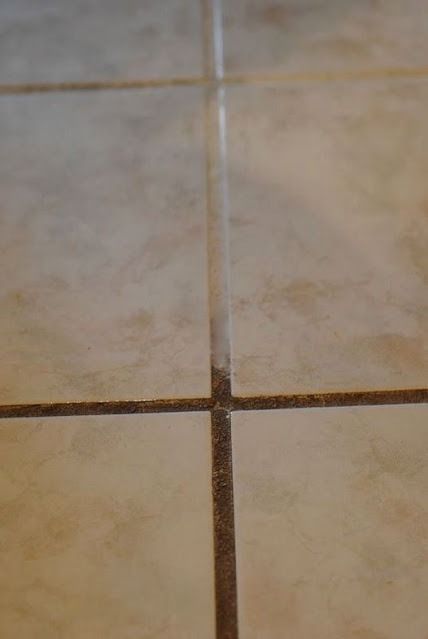ADVERTISEMENT
#### **Instructions:**
1. **Mix the Baking Soda and Vinegar**: In a small bowl, mix together 1/2 cup of baking soda with 1/4 cup of white vinegar. The combination will cause a fizzy reaction, which helps break up dirt and grime from the grout lines and tile surfaces. Stir until a paste forms. You can adjust the consistency by adding more baking soda (to thicken the paste) or more vinegar (to make the paste thinner).
2. **Add Water**: Gradually add water to the mixture to achieve a paste-like consistency that’s easy to spread. You want it to be thick enough to cling to the grout but not so runny that it drips off the surface. The final consistency should be somewhat like a thick gel.
3. **Apply the Cleaner to the Grout**: Using a sponge, soft cloth, or an old toothbrush, apply the mixture to the grout lines and tiles. Be sure to focus on the grout, as that’s where most of the dirt, mold, and stains accumulate. If you’re cleaning larger areas, you may want to use a spray bottle to apply the solution more evenly.
4. **Let it Sit**: Once you’ve applied the paste to the grout and tiles, let it sit for about 10-15 minutes. This gives the ingredients time to break down the dirt and stains. The vinegar will work to disinfect, while the baking soda lifts the grime.
5. **Scrub the Grout and Tiles**: After the paste has had time to sit, take a soft brush (such as an old toothbrush) and scrub the grout lines and tile surfaces. Use circular motions to loosen dirt and stains. For tough spots, you may need to apply a bit more paste and scrub more vigorously.
6. **Rinse and Wipe Clean**: Once you’ve scrubbed the grout and tiles, rinse the area with warm water to remove the paste. Use a clean, dry towel or cloth to wipe down the surfaces, ensuring all residue is removed. For extra shine, you can buff the tiles with a microfiber cloth.
7. **Repeat if Necessary**: If the grout is still dirty after the first cleaning, don’t be discouraged! You may need to repeat the process a couple of times to completely restore the appearance of the grout, especially if it’s particularly stained or aged.
### **Tips for Using Your Grout and Tile Cleaner**
Now that you know how to make your own grout and tile cleaner, here are some additional tips to make the cleaning process easier and more effective:
#### **1. Use a Spray Bottle for Larger Areas**
If you’re tackling large areas of grout and tile, it may be more efficient to use a spray bottle. You can add the vinegar and water to the bottle (without the baking soda) and spray it directly on the surfaces. Then, follow up with the baking soda paste. This method is especially helpful for cleaning walls and expansive tile floors.
#### **2. Don’t Overuse the Vinegar**
While vinegar is a great cleaner, it can be harsh on some surfaces, especially natural stone tiles (such as granite, marble, or limestone). If you have natural stone tiles, it’s best to avoid using this mixture. Instead, look for a stone-safe cleaner or dilute the vinegar even more.
#### **3. Keep Your Tools Clean**
When cleaning grout and tiles, make sure that the tools you’re using (sponges, brushes, or cloths) are clean and free of dirt or debris. Dirty tools can add more grime to your surfaces and make the cleaning process less effective.
**4. Test Before Using**
Before applying the cleaner to an entire surface, test it in a small, inconspicuous area to ensure that it doesn’t cause any damage, especially on delicate tiles or grout. This is important when working with more expensive or unusual tile types.
For Complete Cooking STEPS Please Head On Over To Next Page Or Open button (>) and don’t forget to SHARE with your Facebook friends
